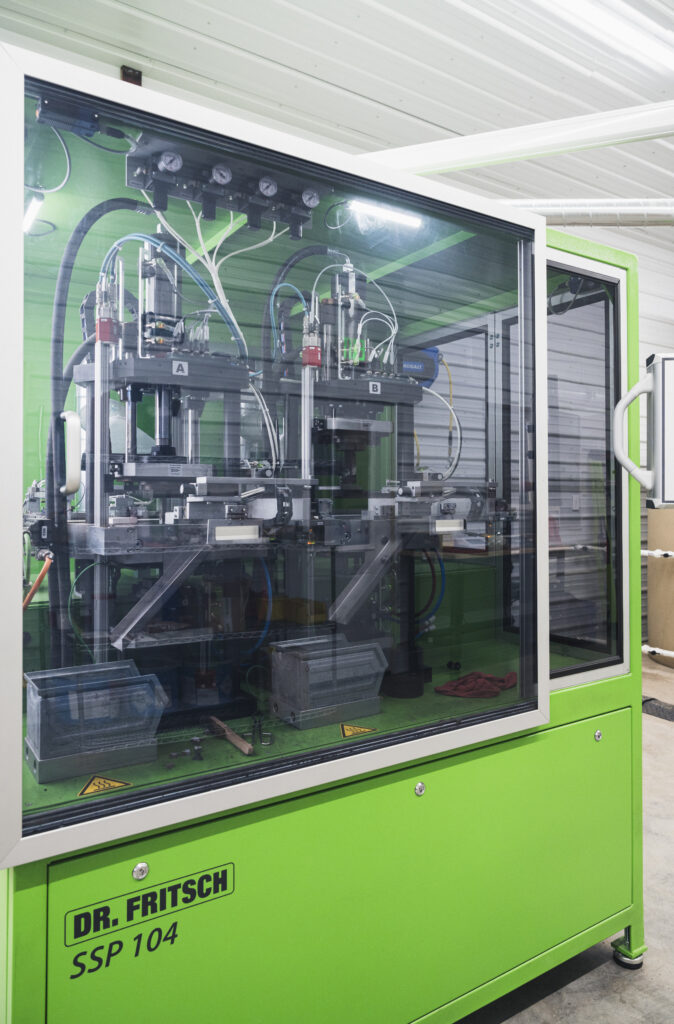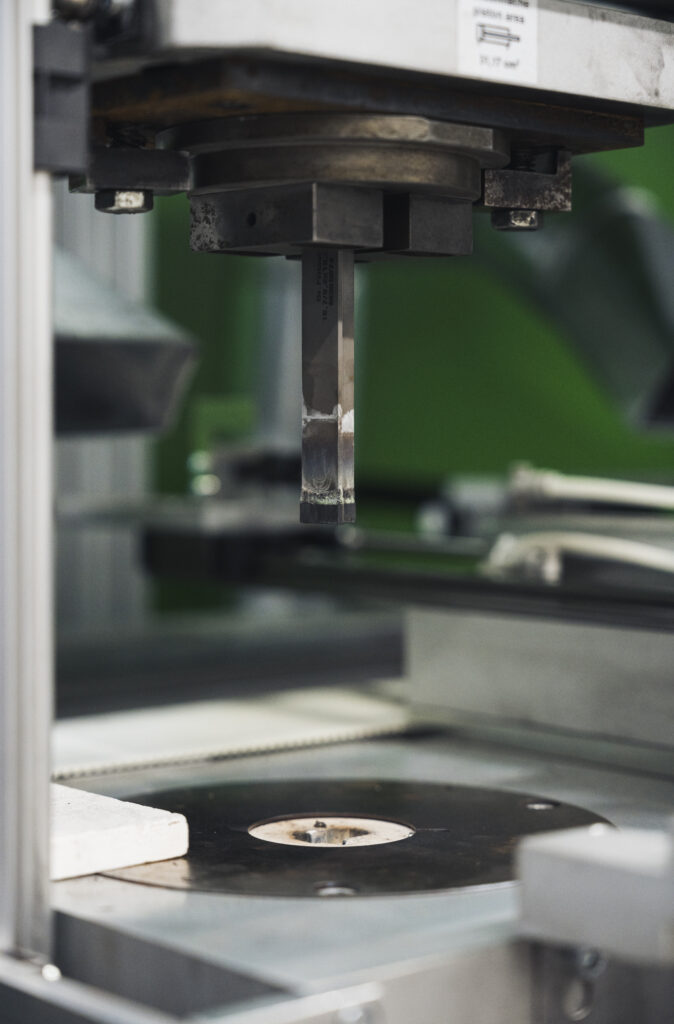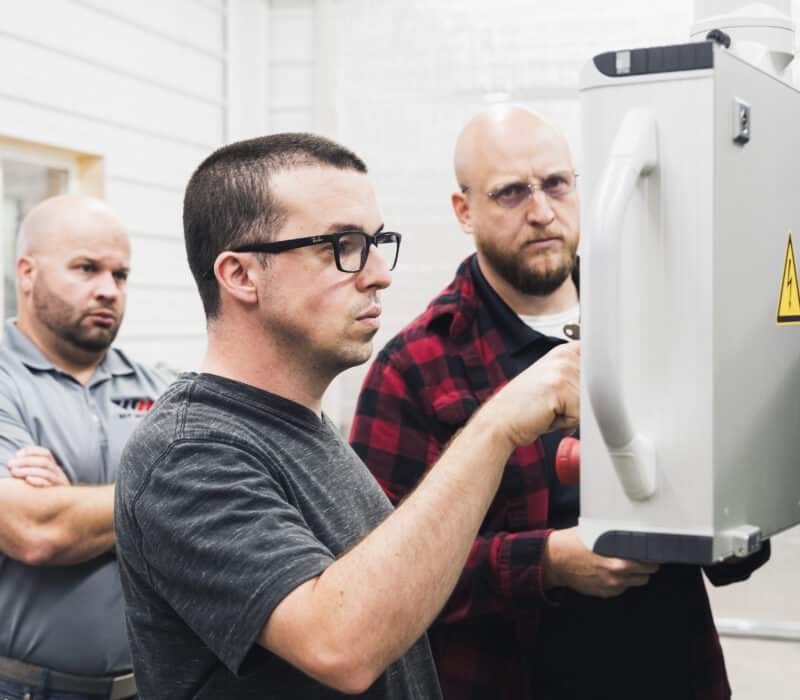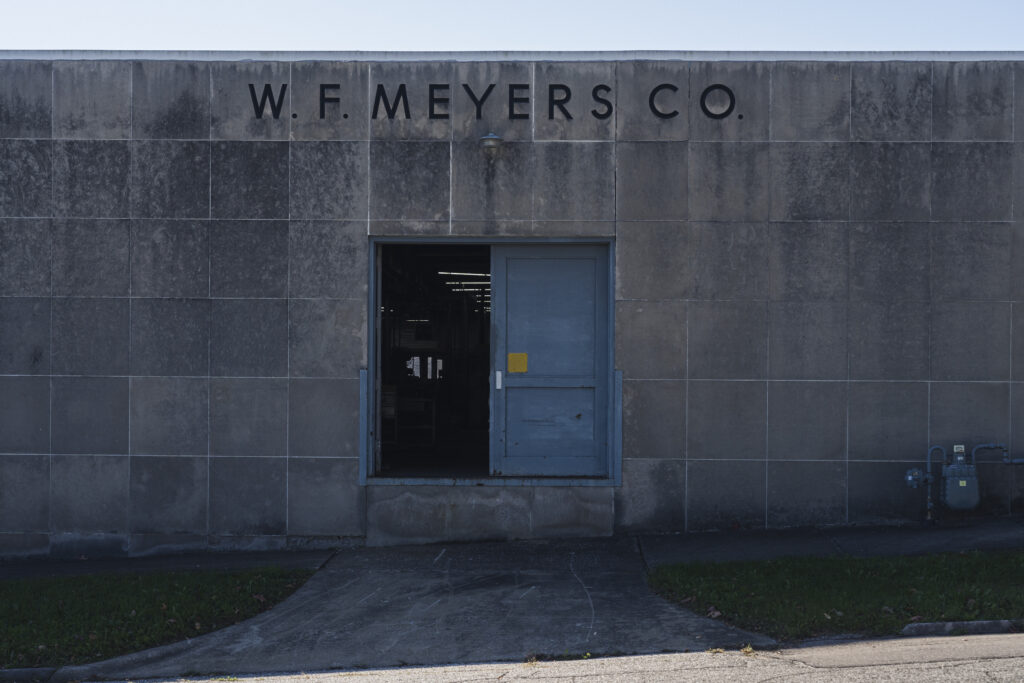WF Meyers earns assist from $200,000 MRG to pursue premier manufacturing processes for the stone cutting industry

Company History
Alex Barnes is the 5th generation to lead his family-founded company which originated in 1888 in Long Island City, New York. “Willard Franklin Meyers was my great-great-grandfather on my mother’s side,” Alex explained, “and the company has always been held and managed by his heirs.” In the early years, Willard met and became friends with Victor Alexander Thornton Albright, who joined the business and eventually became its 2nd President. Victor also married Willard’s daughter, joining the Albright and Meyers families. Over the next quarter-century, the stone cutting industry in Long Island City was shrinking and Meyers considered both Indiana and Quebec as potential relocation sites. In 1911, Willard transferred the company’s operations to Bedford in Southern Indiana.
Albright’s son Willard was the 3rd family member to run the company, and when he became ill in the 1980s, he began looking for his replacement in the next generation. “My dad ran the company for 30 years or so before I came on board,” Alex recalled. He became the 5th generation of the 1st Willard’s descendants to ascend to the top spot.

Today, WF Meyers services the stonecutting industry in 3 areas – Quarrying (freeing limestone from its natural seams in the earth, creating large limestone blocks), slabbing (sectioning these blocks into smaller, ready-to-process slabs) and CNC tooling for stone carving. Their primary business is producing industrial diamond segments for stonecutting for quarrying and slabbing processes. As President, Alex considers his business priority to be setting the company’s vision for the future and maintaining high-level relationships with customers and corporate culture. “Those are the non-negotiables,” he said. “But, we’re a small team so everybody contributes in multiple different ways. I pitch in as needed, too.” The current workforce stands at a dozen employees and includes engineers, designers and production workers “who know their trades and build the best,” he said. “Our specialization is helping stonecutters and quarry crews match the right equipment to their stone. Innovation is key to our service and we develop reliable belts and machines that reduce our customers’ overhead and speed their production.”

The Project
Like so many businesses around the world, WF Meyers was hit hard by COVID-19. As a seasonal business with outdoor operations, the company naturally slows in winter, and that was when the pandemic first hit. “We were at the lowest point in our annual cash cycle, so we took a hard look and decided to scale back,” Alex explained. “We shifted our focus to the things we thought we could be great at. There were a few things that were a little speculative or that we weren’t really experts at – all of those got dropped.” With those tweaks, WF Meyers’ business stabilized. Profits were up, and the possibility of an even stronger business loomed. “We had several discussions about what that might look like and discussed investing in our core technology to make our core products better.” Management agreed that investment could not only improve the manufacturing process, but also open new doors with innovative products. The potential of an MRG helped solidify those possibilities.
To understand the company’s flagship product, start with a quarry system that extracts limestone from the ground, and visualize a large mobile chainsaw bar on railroad tracks. The bar drops into the ground, and a belt rotating around the bar cuts the limestone via a computer-controlled process. That belt, comprised of diamond segments, is WF Meyers’ primary product. Once the limestone block is freed from the earth, the slabbing system uses another belt to cut sections for use in paneling, stair treads, windowsills or other operations — also controlled by CNC tooling with principles similar to other subtractive manufacturing, like metal grinding or milling.



Diamonds are central to this manufacturing process, but unlike natural gemstones, these tooling diamonds are synthetic and lab-created with a specific size and hardness in mind. The diamonds’ purpose is to make the cuts through the limestone block. A very fine metal is combined with the diamond during the tool manufacturing process, forming what’s called a bond matrix. This bond is specifically engineered to release diamonds at the ideal time when they lose sharpness and cutting efficiency, but not so quickly to waste material and shorten tooling lifespan. The diamond tool or segment is created through a two-step process – a cold press forms the initial tool shape, which is then loaded into a sintering/hot press that operates at higher pressures and temperatures, stabilizing the bond matrix and producing a finished, hardened stonecutting tool.


An evaluation of the alternatives demonstrated that the advanced equipment would reap greater benefits for both WF Meyers and its customers. From the customer’s point of view, the new segmenting machinery would provide more reliable quality control, increased tool life with less downtime due to belt changes. But all that would come at a greater up-front price. To ensure customers will find the new product worth the higher price, the company is setting up customer trials to provide measurable results. “This is a long-term project for us,” Alex said. “The priority for us is to get our old equipment out of production and start making the premium product 1-for-1. Currently we’re rolling out the new product in tests on factory floors to get reliable statistics demonstrating the improved product, and to ensure both the company and its customers that the equipment works as designed, providing a superior product.”
“I knew who I wanted to buy this equipment from,” Alex said. “We selected a German vendor, Dr Fritch GMBH, generally considered the best in the business. The question was, do we go with an updated version of our current tech, or step out of what we know and look at newer tech. It appealed to us to develop an entire new product line and move boldly into a complete advanced manufacturing project. Big, big energy savings and water savings were two reasons. We calculate that we will save about $15,000 a year just on energy savings. We have a young management team all planning on being here for a while. If there was ever a time to take a swing for the fences, this was it.” The management team chose 3 pieces of the German firm’s advanced equipment to revolutionize their manufacture of diamond tool manufacturing — a Cold Press, a Diamond Arrayer, and a Carbonless Sintering Hot Press.






The new cold press is volumetric – creating diamond segments using volume rather than mass measurements – and is better suited for mass production. The SSP 104 E Carbonless Sintering Press uses 2 cavities for sintering instead of a carbon graphite frame, eliminating the need for custom fixtures, reducing waste and providing a more consistent and repeatable product. The DiaSet V2 diamond Arrayer generates arrayed diamond segments with a 30% greater tool life with the same cutting speeds, allowing WF Meyers to sell a premium arrayed product in addition to standard segments with randomly distributed diamonds. Together, the 3 create a cutting-edge diamond tooling production system, producing established products with higher quality, along with the new line of premium products. The suite of equipment incorporates several smart manufacturing elements – automatic cold press filling height corrections and inductive/proximity sensors ensure proper operations with digital alerts if an operation requires attention. All machines are also internet-enabled for remote servicing, monitoring production and generating digital records.

Manufacturing Readiness Grants (MRG) provided by the Indiana Economic Development Corporation and administered by Conexus Indiana are available to Indiana manufacturers willing to make capital investments to integrate smart technologies and processes. WF Meyers Company invested its $200,000 MRG to help upgrade its 30-year-old technology to cutting-edge, state-of-the-art advanced manufacturing equipment.

Workforce Implications

“Everyone here knows our old hot press went down almost weekly,” Alex explained. “Getting buy in was easy. Plus, we have many long-time employees, and I think they feel good seeing us invest in the future. Everyone knows that this is the core of what we do and the key to keeping the doors open. Our guys look around and see we’re in an old building with old equipment. They know that can’t go on forever. We have to innovate and reinvent.”
Two training technicians came to the plant from Germany after the equipment arrived and was installed. Because that was in the busy summer period, only 1 operator was able to take the training. With just 6 employees on the production line, training 2 simultaneously would have eliminated 1/3 of the production crew for 2 weeks.” However, Alex anticipates 2 technicians returning to ensure everyone is properly trained.

Shared Learnings

Alex heartily recommends that his fellow Indiana manufacturers consider applying for support to help fund major advanced and smart manufacturing upgrades. “I’ve tried to steer as many of our customers toward this grant program as I can because I think that – if everyone in the Indiana limestone industry took advantage of this program – our industry would be in a totally different place,” he said. He believes that, if everyone committed to 1 big project to expand or improve or modernize their operations, it would trigger a significant advance for the industry. “It’s not as intimidating as you might think,” he advised. “It connects you to the State, and they want you to win. Ask for their help. If I can write the grant, you can write the grant. If you run a business, you can fill out this grant application.”
He likened the process to an exercise in strategic planning. “There’s nothing on the application that you shouldn’t answer for yourself anytime you’re thinking about making a big investment. Think of it like a strategic planning tool, regardless of whether you get money at the other end of it.”
Alex said the grant application process reinforced whether to recapitalize a newer version of their old process or take an innovative new process. “Big risk, big opportunity,” he said. “Certainly, some big cost savings and efficiency. You’re standing at a crossroads, and the questions you answer on the grant application can help clarify that decision. There were other areas we could have invested in, applied for and maybe received an MRG. But until you make a big difference, does it really matter? To me, there was only one winner. We stand on quality and that’s not hit or miss quality. We’ve been this doing for well over a century, and we didn’t get into it to be a 3rd rate option.”



“We have a young management team all planning on being here for a while. If there was ever a time to take a swing for the fences, this was it.”
Alex Barnes
President at WF Meyers Company, Inc
